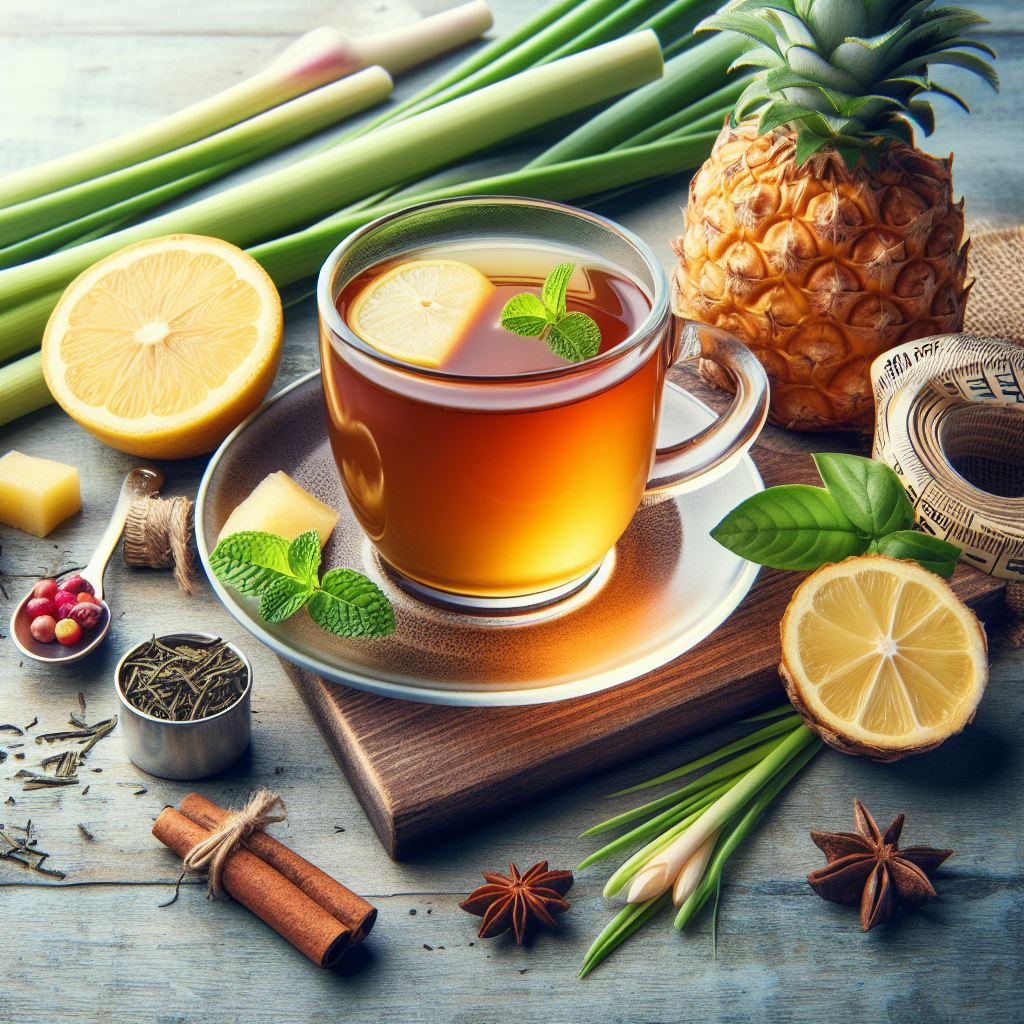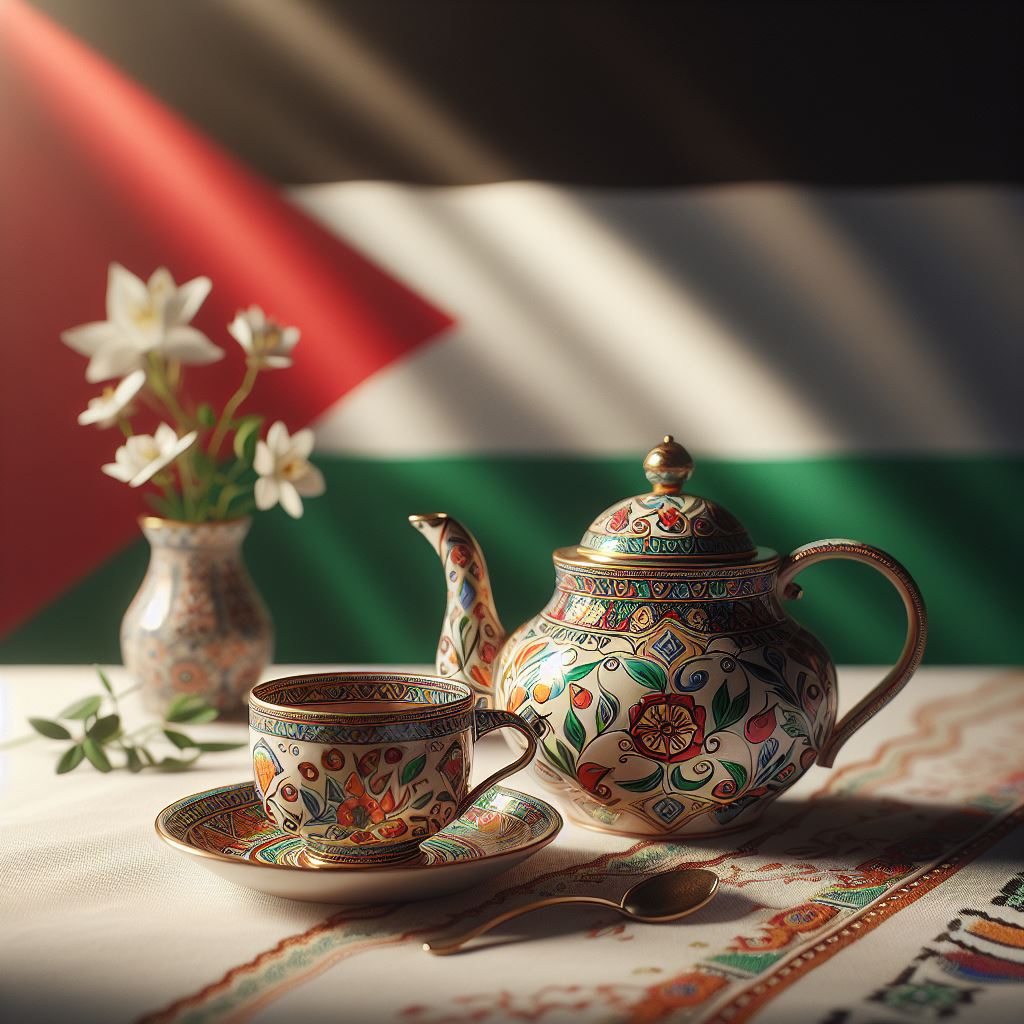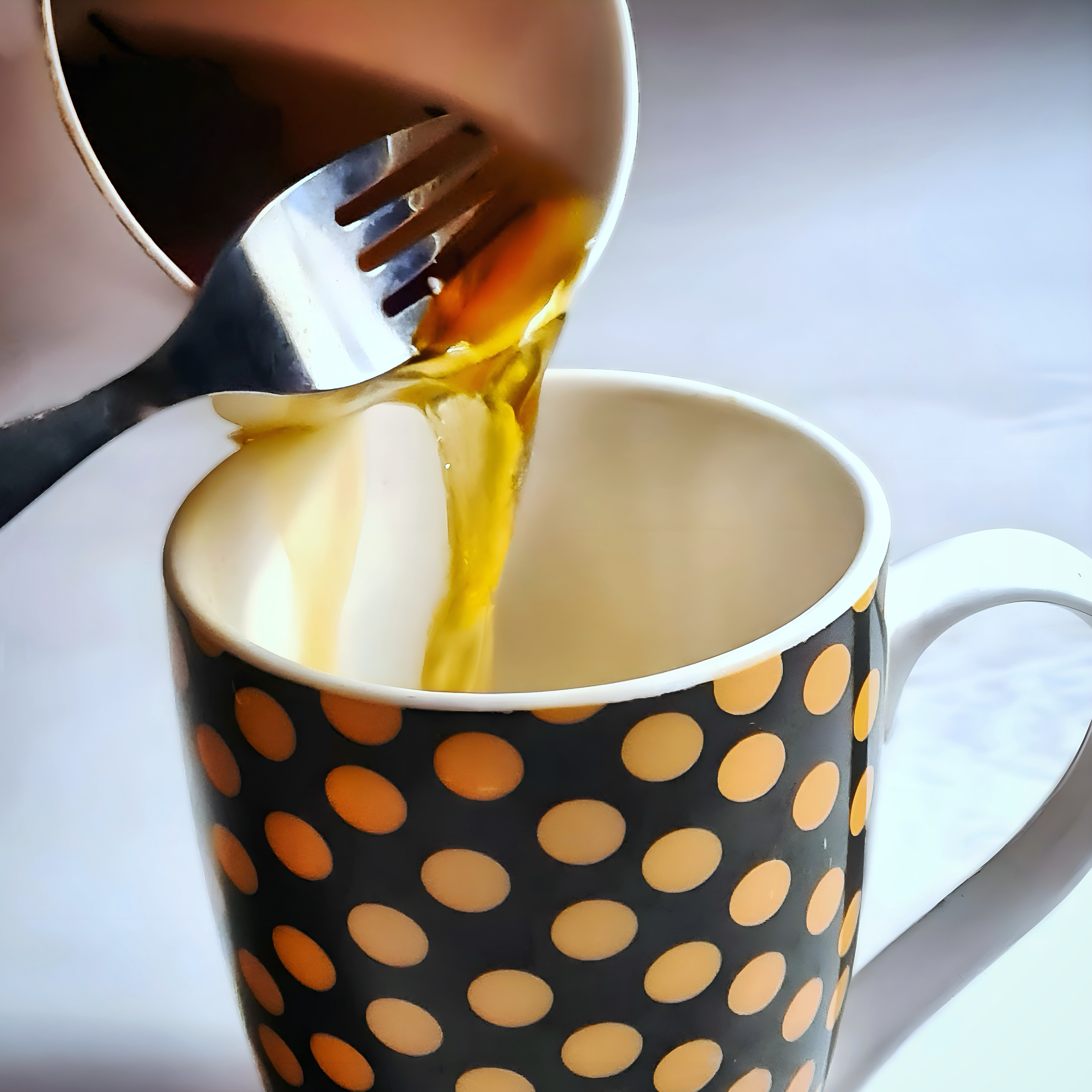Have you ever wondered what it would be like to sip on a cup of fragrant flowers? If you are a fan of floral teas, you might want to try lilac tea, a delicate and delicious infusion made from the blossoms of the lilac plant. Lilac tea is not only a treat for the senses, but also a way to connect with nature and history. In this article, we will explore the world of lilac tea, from its origins and cultural significance, to its health benefits, brewing methods, and tips & tricks.

Understanding Lilac Tea
Lilac tea is a herbal tea made by steeping fresh or dried lilac flowers in hot water. The tea has a light and subtle flavor with a floral sweetness reminiscent of the lilac flower’s natural scent. The color of the tea can range from pale pink to light purple, depending on the variety of lilac you use.
History and Origin of Lilac Tea
Lilac tea has a long and rich history, dating back to ancient times. Lilac is native to Europe and Asia, where it has been cultivated for centuries for its ornamental and medicinal purposes. The name lilac comes from the Persian word lilak, meaning “bluish”. It was introduced to North America by European settlers in the 18th century. Soon after, it became a popular garden plant and a symbol of spring.
Lilac tea has been enjoyed in different cultures and traditions, often associated with love, romance, and celebration. In France, lilac is the flower of May Day, and people exchange lilac bouquets as a sign of friendship and affection. Moreover, In Russia, lilac is a symbol of the victory over Nazi Germany in World War II. People often celebrate with lilac festivals and parades. As for China, lilac is a symbol of purity and innocence, and people drink lilac tea to cleanse their bodies and minds.
Types of Lilac
There are many varieties of lilac, each with its own characteristics and flavor. Some of the most common types of lilac are:
- Common lilac (Syringa vulgaris): This is the most widely grown and familiar type of lilac, with large clusters of purple, pink, white, or blue flowers. It has a strong and sweet fragrance, and a mild and pleasant flavor.

- Persian lilac (Syringa x persica): This is a hybrid of common lilac and Afghan lilac, with smaller and looser clusters of lavender or white flowers. It has a more delicate and spicy fragrance, and a slightly bitter flavor.

- Chinese lilac (Syringa x chinensis): This is a hybrid of common lilac and Rouen lilac, with medium-sized clusters of purple or white flowers. It has a more subtle and fresh fragrance, and a smooth and sweet flavor.

Health Benefits of Lilac Tea
Lilac tea is not only a delicious beverage, but also a healthy one. Lilac tea is rich in antioxidants, which help to protect the body from oxidative stress and inflammation. This tea also has anti-inflammatory, antibacterial, antifungal, and antiviral properties, which can help to fight infections and boost immunity. Not only this, it can also help to soothe the nervous system, reduce stress and anxiety, and promote relaxation and sleep. Some of the health benefits are:
- Relieves headaches and migraines: Lilac tea can help to ease the pain and discomfort caused by headaches and migraines. This is thanks to its anti-inflammatory and analgesic effects. Using this tea can also help to relax the blood vessels and improve blood circulation, which can prevent or reduce the severity of headaches and migraines.
- Improves skin health: Lilac tea can help to improve the appearance and health of the skin, thanks to its antioxidant and astringent effects. The floral tea can help to prevent and heal skin damage caused by sun exposure, pollution, and aging. Additionally, lilac tea can help to tighten the pores, reduce wrinkles, and balance the oil production of the skin. Try combining lilac with green tea for the ultimate skincare beverage – Green Tea Benefits for Hair – How to Apply It & Why It Works
- Supports digestion: Lilac tea can help to support the digestive system, thanks to its antibacterial and antifungal effects. It can help to prevent and treat digestive issues such as indigestion, bloating, gas, nausea, and diarrhea. This tea also helps to stimulate the appetite and regulate the metabolism.
Harvesting and Preparing Lilac
If you want to make your own lilac tea, you will need to harvest and prepare the lilac flowers. Otherwise, you will need to purchase some lilac online or in your local florist. Here are some tips on how to harvest and prepare lilac:
1. Identifying Edible Lilacs
Not all lilacs are edible, and some can be toxic or cause allergic reactions. Therefore, it is important to identify the lilacs that are suitable for tea-making. The edible lilacs are those that belong to the genus Syringa, which have four petals and a tube-shaped base. The toxic lilacs are those that belong to the genus Ceanothus, which have five petals and a star-shaped base. You can also use a reliable guide book or consult an expert to help you identify the edible lilacs.
2. Harvesting Tips
The best time to harvest lilac flowers is in the morning, when they are fully bloomed and have the most fragrance and flavor. You should choose the flowers that are fresh, healthy, and free of pests and diseases. Moreover, you must avoid the flowers that are near roads, factories, or other sources of pollution, as they may contain harmful chemicals. You should also make sure that the lilacs you harvest have not been sprayed with pesticides or other chemicals. Make sure to ask for permission if they belong to someone else.
3. How to Harvest
To harvest the lilac flowers, you will need a pair of scissors or a sharp knife, and a basket or a bag. You should cut the flower clusters at the base of the stem, leaving about an inch of stem attached. Remove any leaves or buds from the stem, as they can affect the flavor and quality of the tea. You should then place the flower clusters in the basket or the bag, and avoid crushing or bruising them.

Preparation of the Blossoms
Before you use the lilac flowers for tea-making, you will need to prepare them by cleaning and drying them. Here are the steps to follow:
- Cleaning: You will need to rinse the lilac flowers under cold running water, and gently shake off any excess water. You will also need to remove any dirt, insects, or debris from the flowers. You can also use a soft brush or a cloth to gently wipe the flowers.
- Drying: You will need to spread the lilac flowers on a clean and dry surface, such as a tray, a baking sheet, or a paper towel. You will also need to place the flowers in a cool and dry place, away from direct sunlight, heat, and humidity. You will need to let the flowers dry for about a week, or until they are crisp and brittle. You will also need to turn the flowers occasionally, and check for any signs of mold or spoilage. You can also use a dehydrator or an oven to speed up the drying process, but be careful not to overheat or burn the flowers.
Once the lilac flowers are dry, you can store them in an airtight container, such as a glass jar, a tin, or a ziplock bag. You can also label the container with the name and the date of the flowers, and keep them in a cool and dark place, away from light, heat, and moisture. You can use the dried lilac flowers for up to a year, or until they lose their fragrance and flavor.
Brewing Lilac Tea
Now that you have the lilac flowers ready, you can brew your own lilac tea. Here are the ingredients and equipment you will need:
- Ingredients:
- 2 tablespoons of fresh or dried lilac flowers
- 4 cups of water
- Honey, sugar, or other sweeteners (optional)
- Equipment:
- A kettle or a pot
- A teapot or a pitcher
- A tea strainer or a cheesecloth
- A spoon
- A cup or a mug
Here is the step-by-step brewing guide:
- Step 1: Boil the water in the kettle or the pot, and turn off the heat when it reaches a rolling boil.
- Step 2: Add the lilac flowers to the teapot or the pitcher, and pour the hot water over them. You can also use a tea strainer or a cheesecloth to hold the flowers, and place it in the teapot or the pitcher.
- Step 3: Cover the teapot or the pitcher with a lid, and let the tea steep for about 10 minutes, or longer if you prefer a stronger flavor. You can also gently stir the tea with a spoon to help release the flavor and aroma of the flowers.
- Step 4: Strain the tea into a cup or a mug, and discard the flowers. You can also add honey, sugar, or other sweeteners to taste, if you like.
- Step 5: Enjoy your lilac tea while it is hot, or let it cool down and refrigerate it for later.
Serving and Pairing Suggestions
Lilac tea is a versatile and delightful beverage that can be served and paired in different ways. See below for some tips on how to enhance your lilac tea experience:

Serving Tips
- Glassware: Lilac tea is best served in clear glassware, such as a glass cup, a mug, or a teapot. This way, you can appreciate the beautiful color and the delicate petals of the tea.
- Presentation: Lilac tea is a perfect drink for special occasions, such as weddings, anniversaries, or birthdays. You can make your lilac tea more festive and elegant by adding some fresh or dried lilac flowers, or some edible gold or silver flakes, to the tea. You can also garnish the tea with some mint leaves, lemon slices, or lavender sprigs, for some extra flavor and aroma.
- Temperature: Lilac tea can be enjoyed hot or cold, depending on your preference and the season. Hot lilac tea can warm you up and soothe your throat, while cold lilac tea can refresh you and quench your thirst. You can also add some ice cubes or frozen berries to your cold lilac tea, for some extra chill and sweetness.
Variations
- Iced Lilac Tea: If you want to make iced lilac tea, you can follow the same brewing method as above, but use twice the amount of lilac flowers, to make a stronger tea. Then, let the tea cool down completely, and refrigerate it for at least an hour, or overnight. You can also add some lemon juice, honey, or other sweeteners to the tea, if you like. To serve, pour the tea over ice, and garnish with some fresh or dried lilac flowers, or some mint leaves, lemon slices, or lavender sprigs.
- Blends with Other Herbs or Teas: If you want to experiment with different flavors, you can blend lilac tea with other herbs or teas, such as chamomile, lavender, rose, mint, lemon balm, green tea, black tea, or white tea. You can either mix the dried lilac flowers with the other herbs or teas before brewing, or steep them separately and combine them later. You can also adjust the ratios and the steeping times according to your taste and preference.
Pairing Ideas
- Foods: Lilac tea can pair well with various foods, especially those that have a light and sweet flavor, such as pastries, cakes, cookies, scones, muffins, or macarons. You can also pair lilac tea with some savory foods, such as cheese, crackers, sandwiches, salads, or soups, for some contrast and balance.
- Occasions: Lilac tea can suit different occasions, whether you want to relax, celebrate, or socialize. You can enjoy lilac tea as a morning or afternoon treat, or as a bedtime drink. You can also serve lilac tea at a tea party, a picnic, a bridal shower, or a spa day. You can also share lilac tea with your friends, family, or loved ones, or enjoy it by yourself.
Conservation and Sustainability
Lilac tea is a wonderful way to enjoy the beauty and benefits of nature, but it also comes with some responsibility and awareness. Below are some points to consider when making and drinking lilac tea:

Sustainable Harvesting
Lilac flowers are a precious and limited resource, and they should be harvested with care and respect. You should only harvest the flowers that you need, and leave enough for the plant to grow and reproduce. Try to avoid harvesting the flowers from protected or endangered species, or from private or public lands without permission. You should also follow the local laws and regulations regarding harvesting and using wild plants.
Impact on Bees and Environment
Lilac flowers are not only a source of tea, but also a source of food and shelter for bees and other pollinators. The flowers are rich in nectar and pollen, which help to nourish and sustain the bees and their colonies. Lilac flowers also provide a habitat and a refuge for the bees and other insects, especially in urban areas. Therefore, you should be mindful of the impact of your harvesting and consumption of lilac tea on the bees and the environment. You should avoid harvesting the flowers when they are in full bloom, or when the bees are most active. You should also avoid using pesticides or other chemicals on the lilac plants, or near them, as they can harm or kill the bees and other wildlife.
Conclusion
Lilac tea is a delicate and delicious herbal tea that can offer you a lot of benefits and pleasures. It can help you to relax, heal, and celebrate, as well as to connect with nature and history. Not only is it easy and fun to make, you can also customize it to your liking and mood. We hope that this article has inspired you to try lilac tea, and to explore the delicate world of this floral delight. We also hope that you will share your experiences and recipes with us in the comments below! 🌸
Discover More Tea-Related Articles:
- The Simple Costa Rican Tea Recipe for Natural Weight Loss
- The Best Tea for Radiant Skin: A Unique Guide for Skin Care
- Green Tea Benefits for Hair – How to Apply It & Why It Works
- The Traditional Yemeni Tea – How to Make ‘Adeni Chai’
- How to Make Pumpkin Seed Tea: A Nutritious and Cozy Drink





Leave a Comment